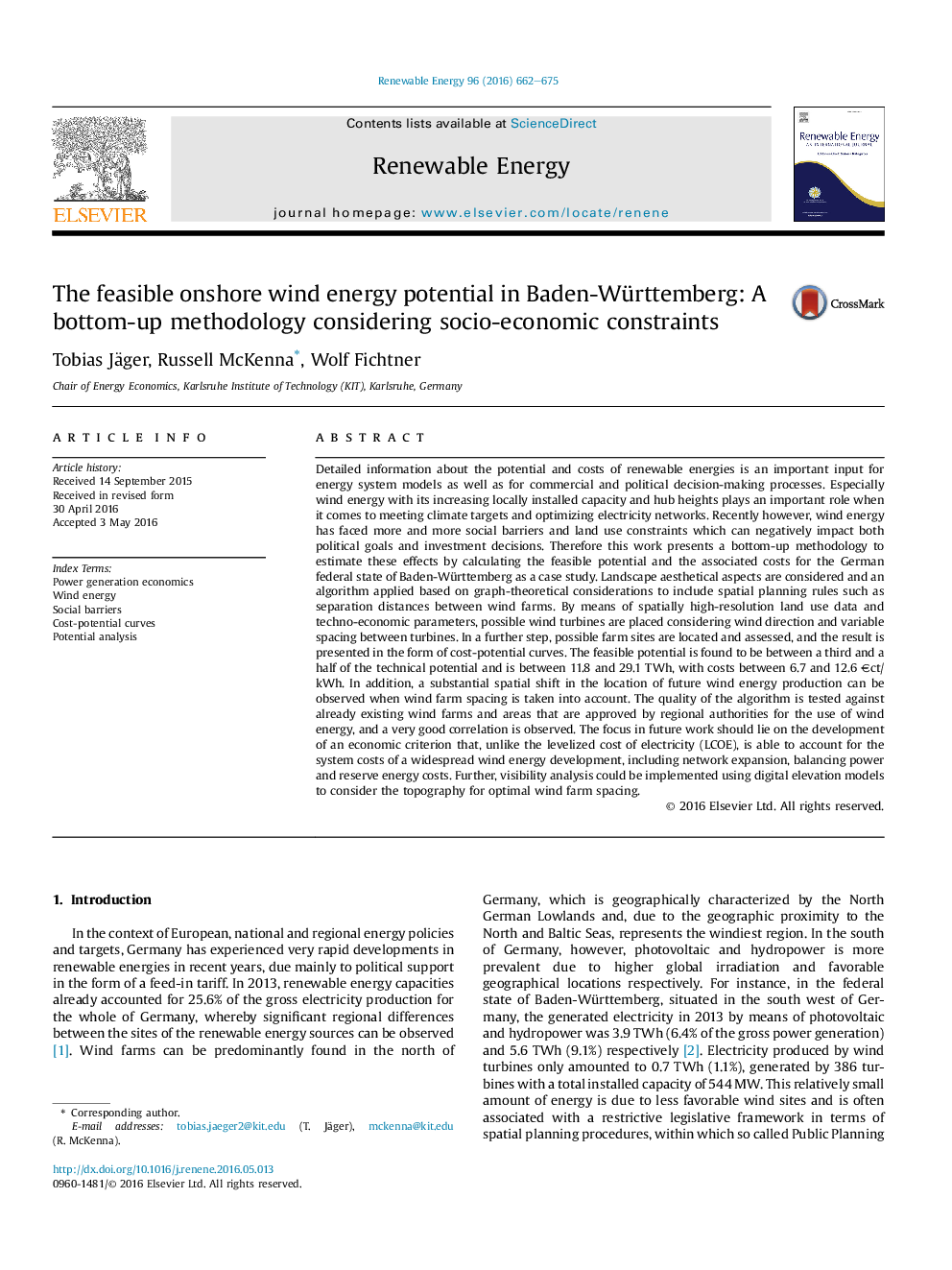| کد مقاله | کد نشریه | سال انتشار | مقاله انگلیسی | نسخه تمام متن |
|---|---|---|---|---|
| 10293908 | 512437 | 2016 | 14 صفحه PDF | دانلود رایگان |
عنوان انگلیسی مقاله ISI
The feasible onshore wind energy potential in Baden-Württemberg: A bottom-up methodology considering socio-economic constraints
دانلود مقاله + سفارش ترجمه
دانلود مقاله ISI انگلیسی
رایگان برای ایرانیان
کلمات کلیدی
موضوعات مرتبط
مهندسی و علوم پایه
مهندسی انرژی
انرژی های تجدید پذیر، توسعه پایدار و محیط زیست
پیش نمایش صفحه اول مقاله

چکیده انگلیسی
Detailed information about the potential and costs of renewable energies is an important input for energy system models as well as for commercial and political decision-making processes. Especially wind energy with its increasing locally installed capacity and hub heights plays an important role when it comes to meeting climate targets and optimizing electricity networks. Recently however, wind energy has faced more and more social barriers and land use constraints which can negatively impact both political goals and investment decisions. Therefore this work presents a bottom-up methodology to estimate these effects by calculating the feasible potential and the associated costs for the German federal state of Baden-Württemberg as a case study. Landscape aesthetical aspects are considered and an algorithm applied based on graph-theoretical considerations to include spatial planning rules such as separation distances between wind farms. By means of spatially high-resolution land use data and techno-economic parameters, possible wind turbines are placed considering wind direction and variable spacing between turbines. In a further step, possible farm sites are located and assessed, and the result is presented in the form of cost-potential curves. The feasible potential is found to be between a third and a half of the technical potential and is between 11.8 and 29.1 TWh, with costs between 6.7 and 12.6 â¬ct/kWh. In addition, a substantial spatial shift in the location of future wind energy production can be observed when wind farm spacing is taken into account. The quality of the algorithm is tested against already existing wind farms and areas that are approved by regional authorities for the use of wind energy, and a very good correlation is observed. The focus in future work should lie on the development of an economic criterion that, unlike the levelized cost of electricity (LCOE), is able to account for the system costs of a widespread wind energy development, including network expansion, balancing power and reserve energy costs. Further, visibility analysis could be implemented using digital elevation models to consider the topography for optimal wind farm spacing.
ناشر
Database: Elsevier - ScienceDirect (ساینس دایرکت)
Journal: Renewable Energy - Volume 96, Part A, October 2016, Pages 662-675
Journal: Renewable Energy - Volume 96, Part A, October 2016, Pages 662-675
نویسندگان
Tobias Jäger, Russell McKenna, Wolf Fichtner,